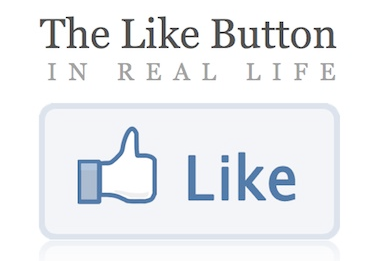 “Likes” and the social graph that creates them represent a new contextual layer on top of the existing web. It’s a layer that brings new opportunities for discovery and personalization in a world where noise is expanding much faster than signal.–VentureBeat blog post
“Likes” and the social graph that creates them represent a new contextual layer on top of the existing web. It’s a layer that brings new opportunities for discovery and personalization in a world where noise is expanding much faster than signal.–VentureBeat blog post
Perhaps the Like button is annoying to you or someone you know. But it offers new media users an exciting prospect–RELEVANT information.
If I told you that the last three movies I watched were “Best In Show,” “Full Metal Jacket,” and “Everest, Over the Edge,” you could discern quite a few things about me. The Facebook Like button can slow sites down and still isn’t used ubiquitously outside of Facebook, but I believe it provides a glimpse of where New Media is heading.
More stats from the VentureBeat blog:
According to All Facebook, last July more than 65 million people were “like-ing” stuff on a daily basis. That’s more than 17.5 billion “likes” over nine months (assuming a constant rate and no growth of Facebook traffic).
In September, Mashable reported that the “like” button is now present on over 2 million sites around the Web.
The author also notes how the growing number of smartphones will exponentially fuel ‘liking’ as people are simply using social sites more often and being trained by sites like Facebook that the more they interact with something or someone, the more they will receive future information automatically from that site.
What percentage of interactions on Facebook are “likes” for you? Has it increased in the last 6-9 months?
I would guess my percentage is near 30%, and has increased by about 50% in the last 9 months.
